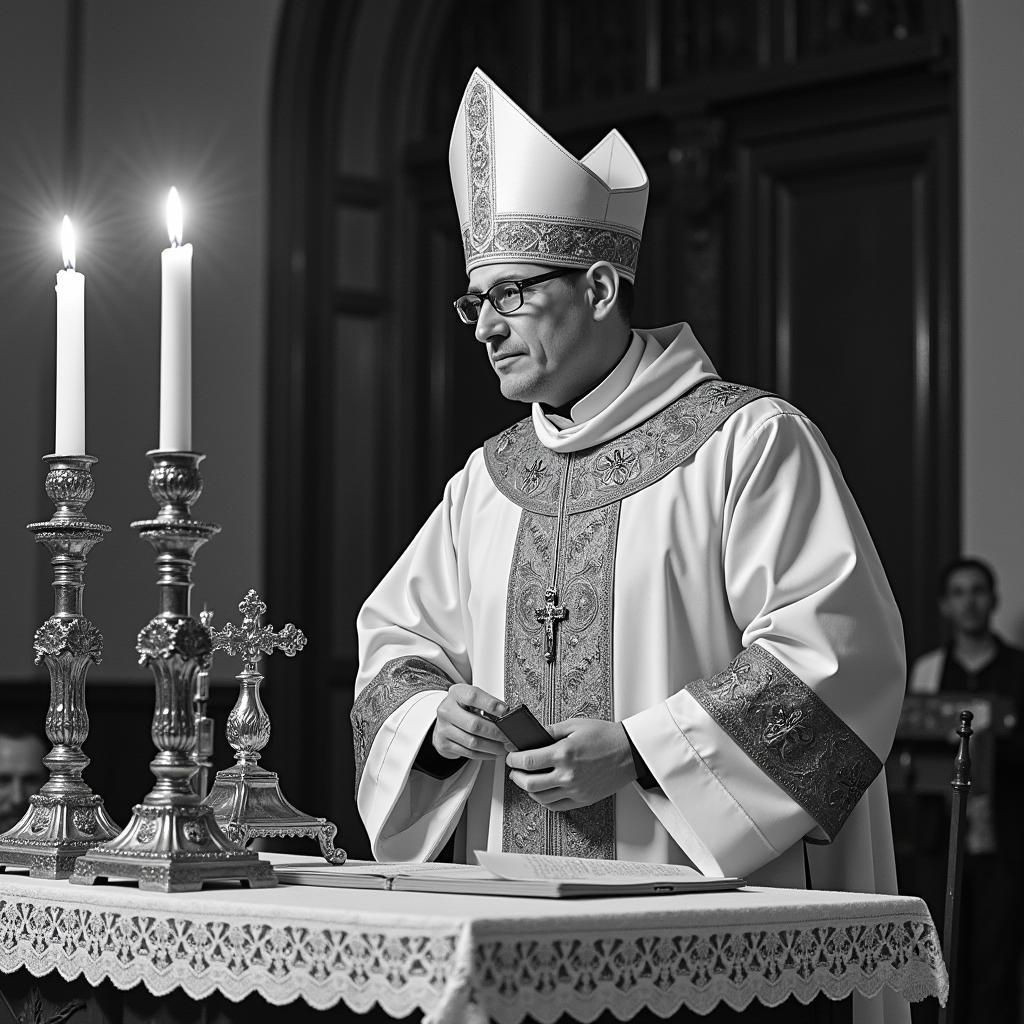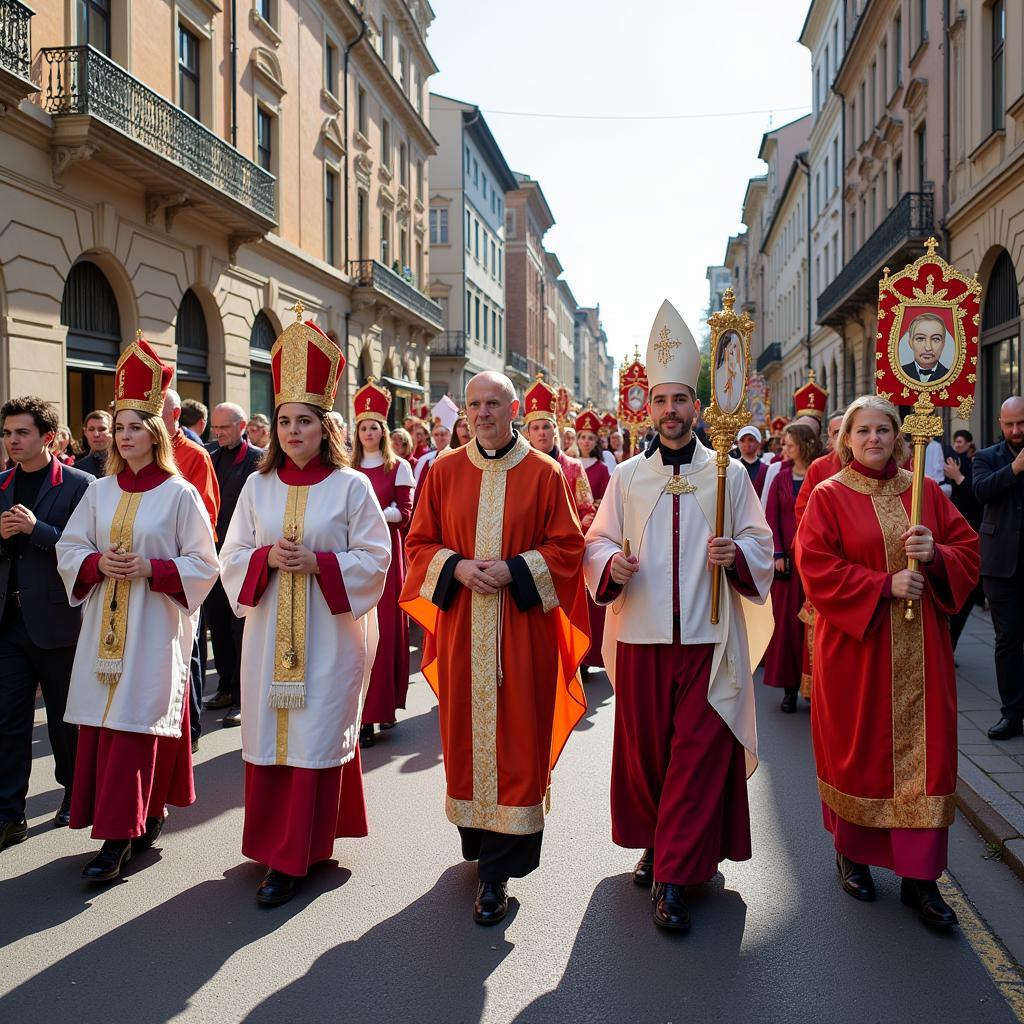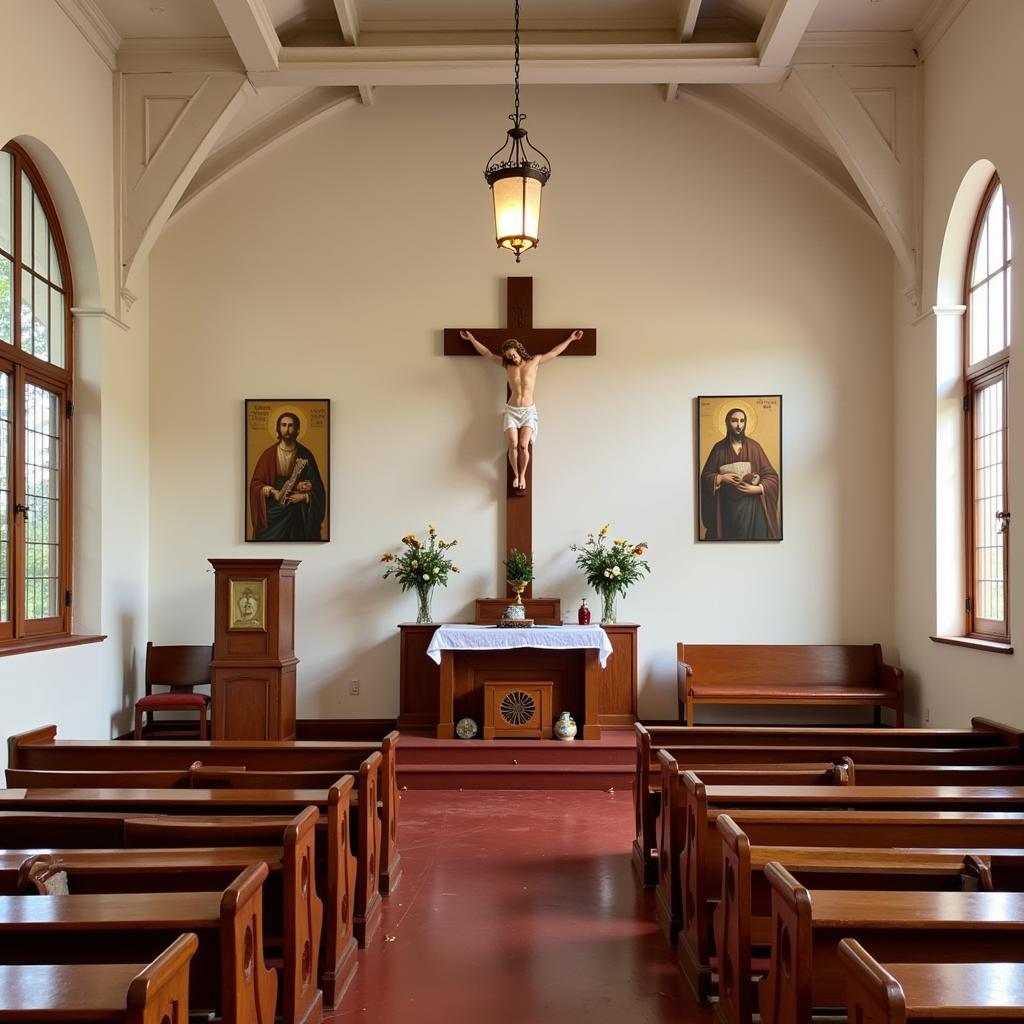The Society Of Saint Pius V (SSPV) is a traditionalist Catholic group that emerged in the wake of the Second Vatican Council (Vatican II) in the 1960s. The SSPV, while sharing roots with the larger Society of Saint Pius X (SSPX), distinguishes itself through its even stricter adherence to pre-Vatican II practices and its more critical stance towards the modern Catholic Church. This article aims to shed light on the history, beliefs, and controversies surrounding the Society of Saint Pius V, fostering dialogue and understanding in a world grappling with religious and cultural differences.
 Traditional Mass celebrated by the Society of Saint Pius V
Traditional Mass celebrated by the Society of Saint Pius V
A Response to Change: The Genesis of the SSPV
The Society of Saint Pius V’s origins can be traced back to Archbishop Marcel Lefebvre, a French prelate known for his staunch opposition to many of the reforms introduced by Vatican II. He founded the Society of Saint Pius X (SSPX) in 1970 as a seminary for training priests in the pre-Vatican II tradition. However, internal disagreements within the SSPX, primarily concerning the degree of acceptance of the modern Church and its teachings, led to a split in 1983. This split resulted in the formation of the Society of Saint Pius V under the leadership of Father Clarence Kelly.
The SSPV, taking a more rigid position than the SSPX, rejected any notion of compromise with the post-Vatican II Church. This stance stemmed from their belief that the reforms of Vatican II, particularly in areas like liturgy and ecumenism, represented a departure from true Catholic doctrine.
Traditionalism and the SSPV: A Closer Look
The core tenets of the Society of Saint Pius V are deeply rooted in traditional Catholicism, emphasizing pre-Vatican II practices and interpretations of faith:
-
Tridentine Mass: The SSPV exclusively celebrates the Tridentine Mass, also known as the Traditional Latin Mass, which was the standard form of the Roman Catholic liturgy before Vatican II. They view this liturgy as embodying a timeless reverence and sacredness they believe is lacking in the post-Vatican II Mass.
-
Papal Authority: While acknowledging the Pope as the head of the Catholic Church, the SSPV adheres to a position known as “sedevacantism.” This perspective maintains that the papacy has been vacant since the death of Pope Pius XII in 1958, asserting that his successors have embraced theological errors.
-
Condemnation of Modernism: The SSPV views many aspects of modern culture and thought as incompatible with Catholic teachings. They are critical of what they perceive as a decline in moral values and a growing secularism within society.
 Religious procession of the Society of Saint Pius V
Religious procession of the Society of Saint Pius V
Navigating Controversy: The SSPV and the Catholic Church
The Society of Saint Pius V’s relationship with the broader Catholic Church is complex and marked by tension. The Vatican considers the SSPV to be in a state of schism, meaning a formal break from the Church. This stance stems from the SSPV’s rejection of Vatican II and their position on papal authority.
Despite the official position of the Church, the SSPV maintains that it remains Catholic in doctrine and practice. They see themselves as upholding the true teachings of the Church in the face of what they perceive as modernist deviations. This dissonance in viewpoints contributes to ongoing debate and discussion within the Catholic world.
Finding Common Ground: A Path Forward?
The story of the Society of Saint Pius V raises important questions about religious identity, tradition, and the impact of change within faith communities. While their stance on Vatican II and their relationship with the papacy remain points of contention, it’s crucial to engage in dialogue with respect and understanding.
Perhaps by seeking common ground in shared values like charity, compassion, and a desire for spiritual truth, bridges can be built across theological divides. The Society For Peace is committed to fostering such understanding, recognizing the importance of respectful conversation in a world striving for greater peace and harmony.
FAQ about the Society of Saint Pius V
1. Is the Society of Saint Pius V part of the Catholic Church?
The Vatican considers the SSPV to be in a state of schism from the Catholic Church. However, the SSPV maintains that it remains Catholic in its beliefs and practices.
2. What are the primary differences between the SSPV and the SSPX?
Both groups emerged from opposition to Vatican II, but the SSPV adopts a stricter stance, particularly regarding their sedevacantist position, which the SSPX does not hold.
3. What is the SSPV’s view on other religions?
The SSPV adheres to the traditional Catholic position on the necessity of the Catholic Church for salvation.
4. Does the SSPV allow women to be ordained?
No, the SSPV, in line with traditional Catholic teachings, does not ordain women to the priesthood.
5. How can I learn more about the Society of Saint Pius V?
It’s essential to gather information from diverse and reputable sources to form a comprehensive understanding.
 Interior of a chapel used by the Society of Saint Pius V
Interior of a chapel used by the Society of Saint Pius V
Need Support?
If you are interested in learning more about navigating cultural and religious differences or promoting peace and understanding, please contact us.
Phone: +44 20 4385 4663
Email: [email protected]
Address: Khu 34, Bac Giang, 260000, Vietnam
We have a 24/7 customer service team ready to assist you.